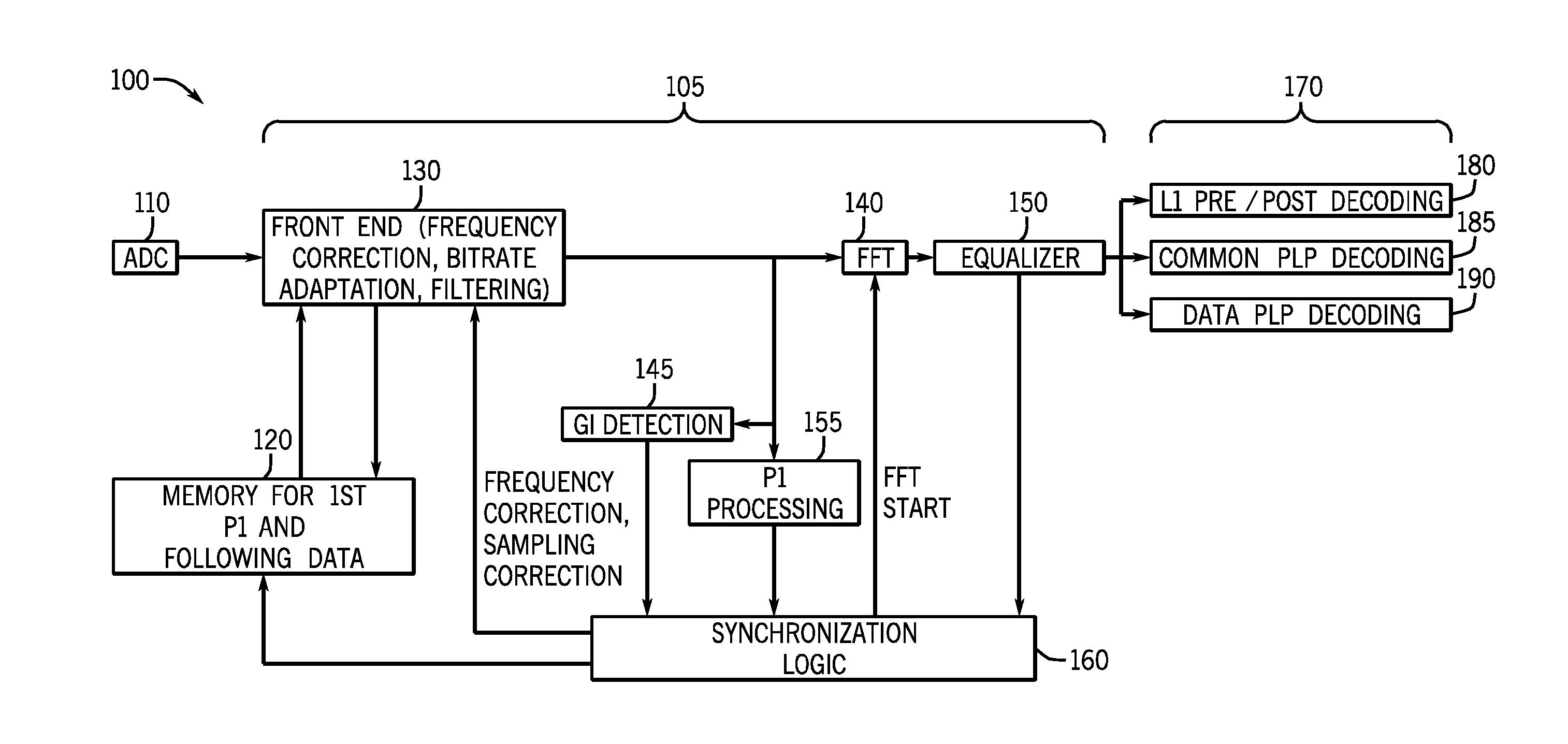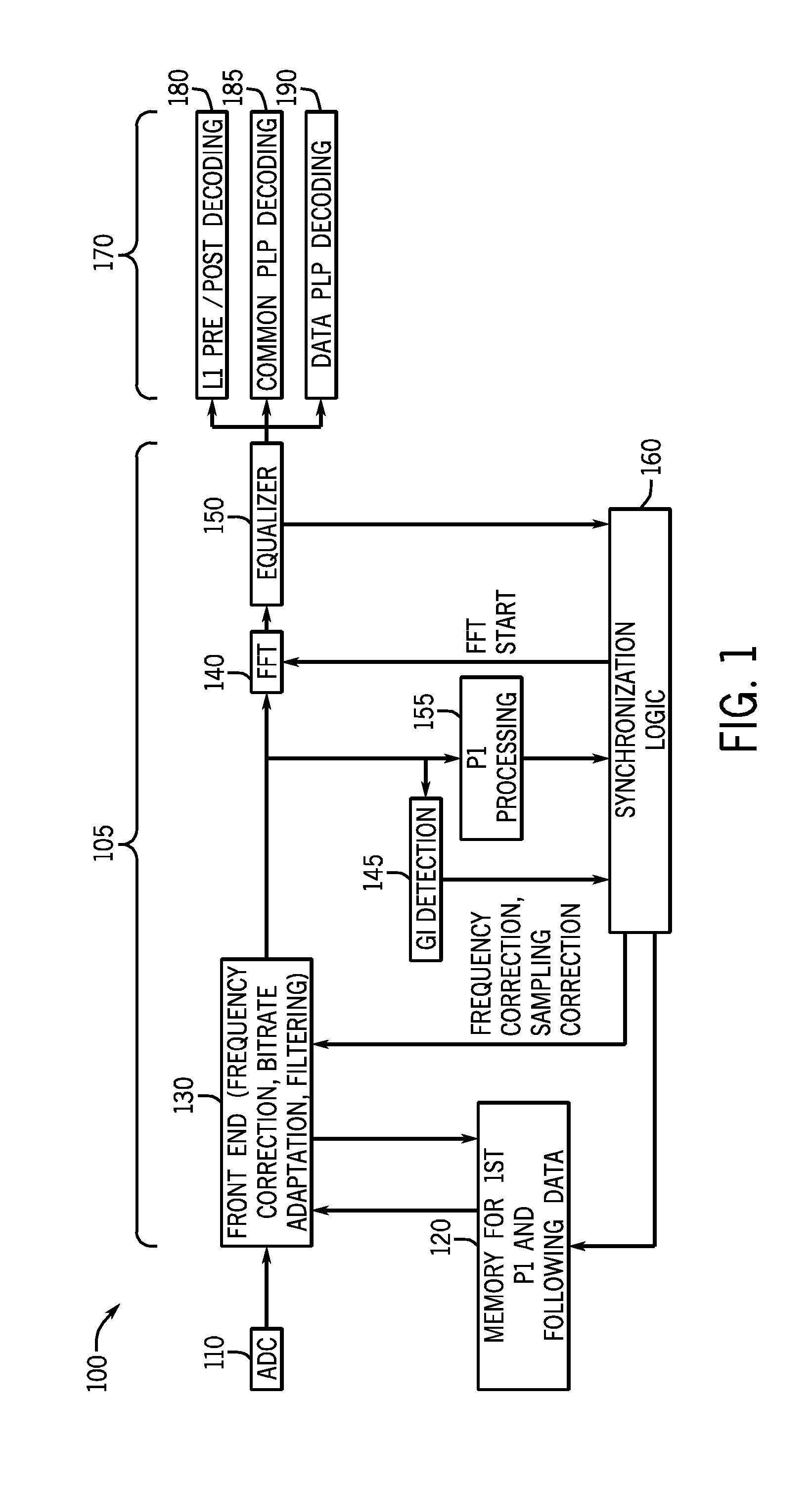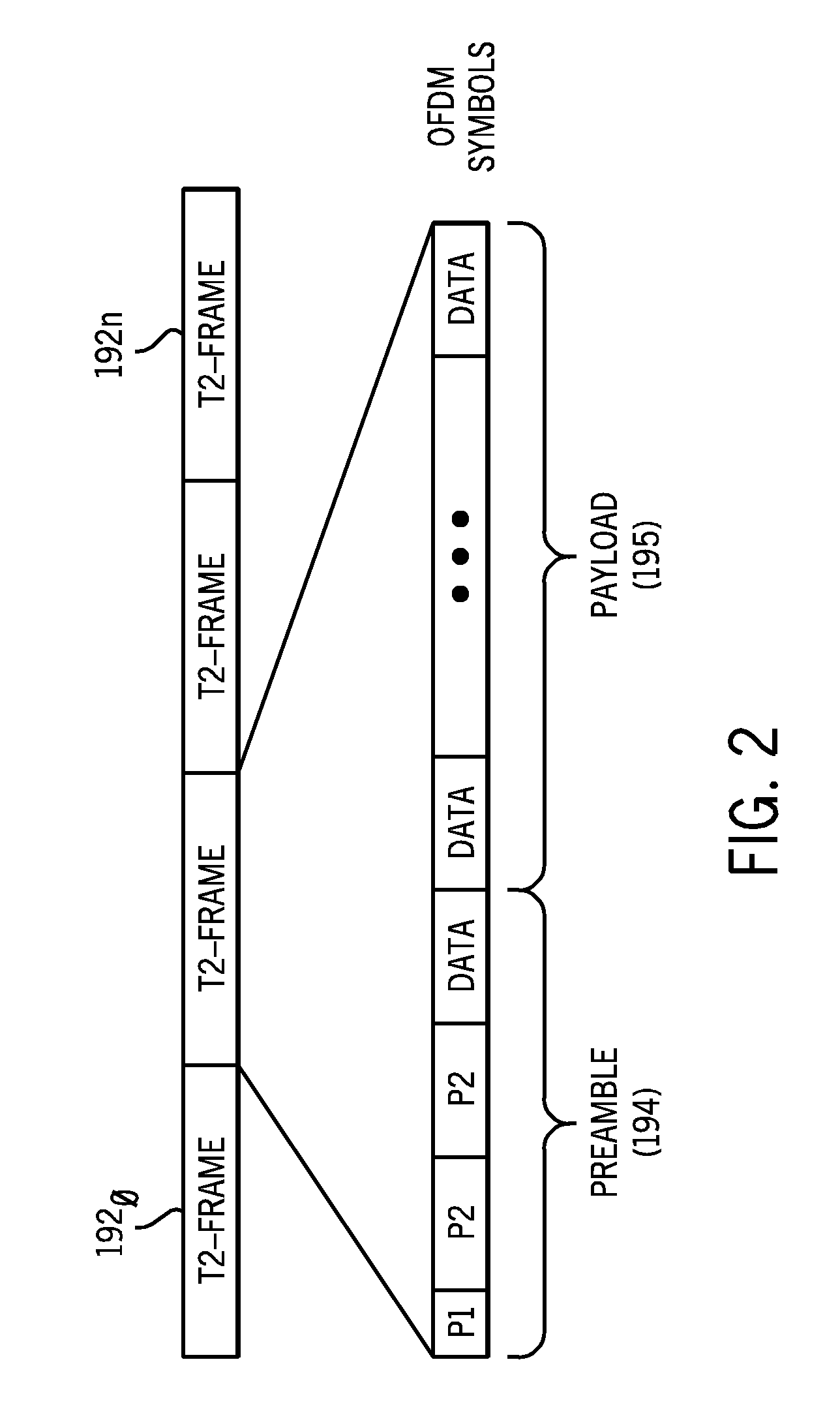Memory-Aided Synchronization In A Receiver
a synchronization and memory technology, applied in the direction of amplitude demodulation, digital transmission, electrical equipment, etc., can solve the problems of complex and time-consuming synchronization process, inability to finalize synchronization for multiple data frames, and inability to know additional information such as knowledge of an operative guard interval, so as to efficiently synchronize a demodulator to an incoming data stream and quickly perform synchronization
- Summary
- Abstract
- Description
- Claims
- Application Information
AI Technical Summary
Benefits of technology
Problems solved by technology
Method used
Image
Examples
Embodiment Construction
[0015]Embodiments may provide a memory that can be associated with a demodulator to aid in synchronization operations. That is, embodiments may provide a memory, which can be a standalone memory or a shared memory, for use in a synchronization process. To this end, the memory may store at least portions of an initial frame of an incoming data stream, e.g., at least the preamble portions, to enable their replay during synchronization to thus complete synchronization and lock the demodulator onto the incoming data stream in a more efficient manner. While embodiments described herein are used in connection with a terrestrial DVB-T2 implementation, it is to be understood that the scope of the present invention is not limited in this regard, and embodiments may be used in various communication systems, particularly where an encoding is according to an orthogonal frequency division multiplexing (OFDM) scheme.
[0016]Referring now to FIG. 1, shown is a block diagram of a portion of a receive...
PUM
 Login to View More
Login to View More Abstract
Description
Claims
Application Information
 Login to View More
Login to View More - R&D
- Intellectual Property
- Life Sciences
- Materials
- Tech Scout
- Unparalleled Data Quality
- Higher Quality Content
- 60% Fewer Hallucinations
Browse by: Latest US Patents, China's latest patents, Technical Efficacy Thesaurus, Application Domain, Technology Topic, Popular Technical Reports.
© 2025 PatSnap. All rights reserved.Legal|Privacy policy|Modern Slavery Act Transparency Statement|Sitemap|About US| Contact US: help@patsnap.com



